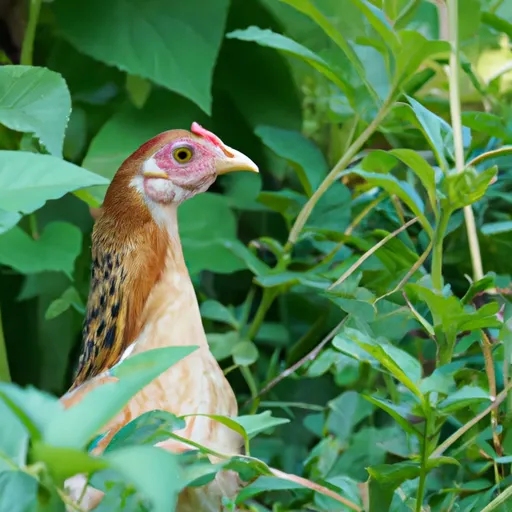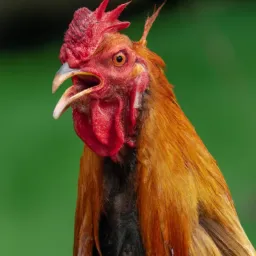Fascinating Chicken History Through The Eyes Of a Chicken
Chicken history…
Who would have thought it!
Well, even chickens do have a history you know…
In Chicken History, When Was The First Chicken Created?
It is said that 58 thousand years ago, amniotic eggs showed up roughly about 340 million or so years ago, and the first cAickens evolved at around 58 thousand years ago at the earliest.
Early enough if you ask me…
It’s a safe bet to say the egg came first.
So there is the age old question…
Eggs were around way before chickens even existed as a chicken a dinosaur.
Chickens Really Are Dinosaurs
Literally, every evolutionary biologist and palaeontologist worth their salt, have stated that long ago had came to the conclusion that birds are descended directly from dinosaurs themselves…

And today it has become generally accepted by scientists that birds are not descended from dinosaurs, but, in fact, are dinosaurs…
Chicken history – Dinosaurs… WOW!
Where Did Chickens Originally Come From?
The domestication of the chicken actually dates back to at least 2000 B.C.
And their actual ancestry can be traced right back to four species of a wild jungle fowl from Southeast Asia.
The history of the chicken and yes they really do have a history that is worth talking about.
So listen up or read on, is better.
The Romans had chickens accompanied them on their military campaigns to predict the victory in battles.
Now that’s something you don’t hear every day!
And this bird still occupies an important position today.
The origins of chickens today are mainly descended from the red forest hen, and partly from three other types related to the precedent.
They come from their native country in India and also Southeast Asia.
As the ability of forest chickens to lay eggs on a daily basis.
It may have evolved over the years to take advantage of these rare feasts that the lush forest had provided for them.
This increased their population when food is plentiful.
Which humans exploited continuously and permanently to this day.
In addition to the weakness of the ability of the chicken to fly.
See also The Many Faces of Cockerels: From Egg to Rooster
And its need for limited areas it made it easy to catch and gather these wild chickens to raise them.
The first species in chicken history to be domesticated dates back at least to 7000 years before today.
But it was not raised for food, rather, it is for a purpose that, according to contemporary concepts, is never related to food.
As the aggressiveness between males armed with natural claws on their feet, Cockfighting made a popular pastime.
Which I don’t agree with personally…
Chickens Went Worldwide
By the second millennium BC, chicken breeding spread from the Andes Valley to China and to the Middle East to occupy a place in royal animal exhibitions
It was used in some religious traditions as well.
But Egypt was the main stop for the beginning of a new history of these birds.
When the hen incubates the eggs, she stops laying new eggs. She sits on a stack of 6 or more eggs for 21 days.
Artificial Egg Incubation
And in the middle of the first millennium BC, the Egyptians learned how to artificially incubate these hens eggs.
This is done by placing them in baskets on hot ashes.
What freed the hens to continue laying eggs on a daily basis
And what was considered royal food or a religious offering soon became a popular meal.

At the same time that the Egyptians were incubating chicken eggs, the Phoenician merchants introduced chickens to Europe,
Instantly it became a staple diet, other than cattle in Europe.
And yet it is for a long time chickens continued to be revered along with its role in food.
The ancient Greeks also used them for fighting as a symbol of inspiring young fighters.
The Romans also took the prophecy from chickens.
And at the end of the seventh century, the chicken was considered a symbol of the Christian religion.
And in the centuries that followed, chickens accompanied humans wherever they went, isn’t that nice…
And ithe chicken spread all over the world through trade, conquest, and colonialism.
And after the opium wars, Chinese dynasties were brought to England where they were bred with local breeds.
See also DIY Toys for Chickens: Enriching Their Environment with Homemade Fun
This led to a phenomenon called ‘Chicken fever’ or “fancy”,
The farmers in Europe sought to breed new varieties that had their own unique set of properties and features.
Charles Darwin And Chickens
This trend had attracted the interest of Charles Darwin himself, who asked about the occurrence of a selective breeding process in nature.
Darwin watched hundreds of chickens, and he performed his historical research, and then he presented his theory of evolution.
But the greatest contribution of chickens to science hadn’t happened yet.
In the early twentieth century, three British scholars made it by conducting mating between different breeds of chicken, based on the studies of Gregor Mandel In the field of genetics and inherited genetics.
With their big genetic differences and many distinctive features, during only 7 months between successive generations, chickens became an ideal tool in research.
This work gave rise to the famous Punnett Square, which is used to show which genotype will be produced when raising a specific pair of species.
After centuries of selection and breeding for numerous extremes, chickens now exist in many colours, sizes and shapes.
And since that time, several initiatives to raise chickens have made them bigger and meatier.
There are more than 350 combinations of physical features known today, the hens even lay more eggs.

And at this time, chicken production turned into an industrial machine that resembles a factory.
So that these birds were raised in places it where such areas does not exceed a piece of paper.
While the orientation is towards breeding in large areas from animal rights and other environmental concerns.
Most of the chickens raised today are over 22 billion from factory breeding.
Starting with being wrestlers and sacrifices to the gods.
Through being travel companions and being used for research, Chickens have played many roles over the past centuries.
Although the chicken may not have come before the egg, as the saying often goes…
The astonishing chicken history reflects a large part of our own.
